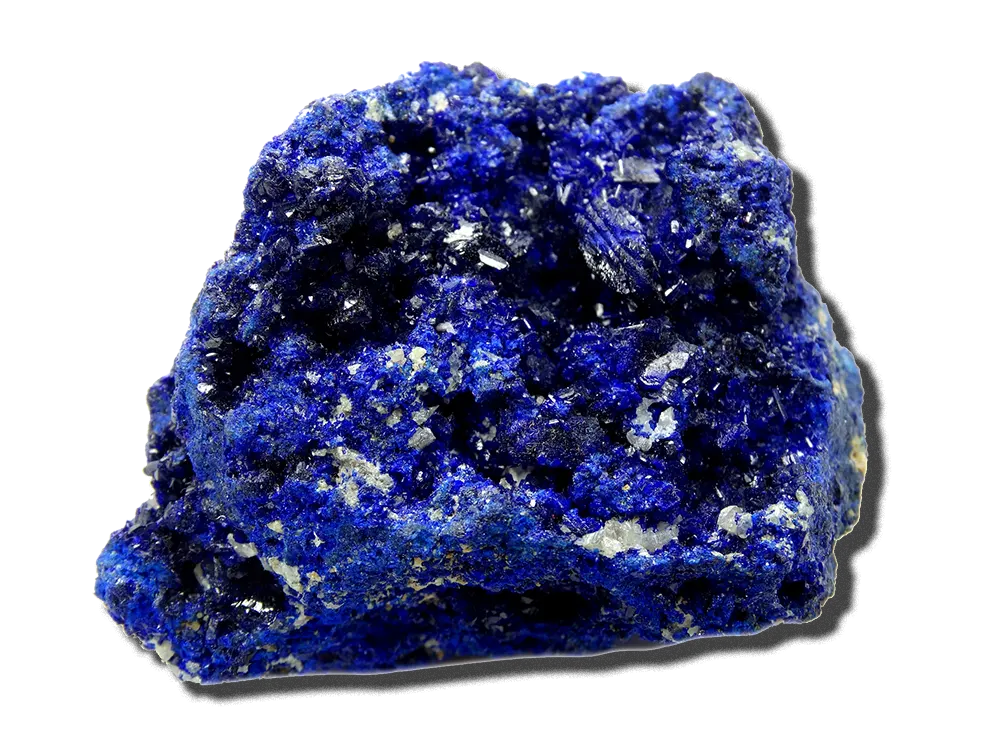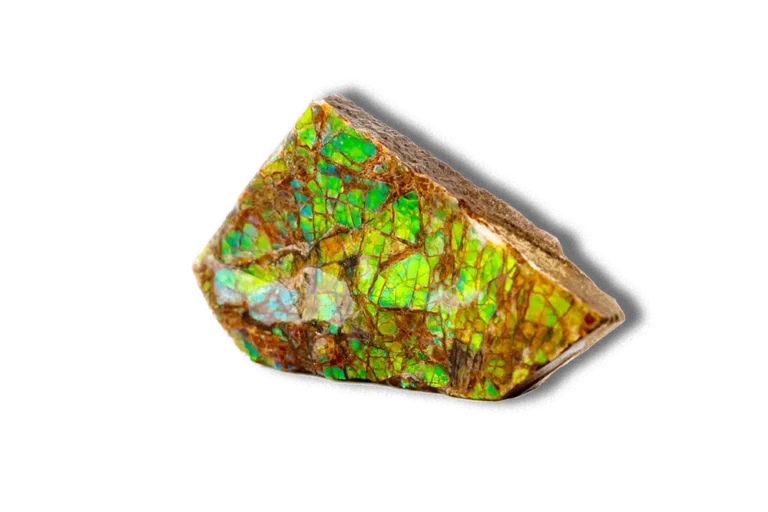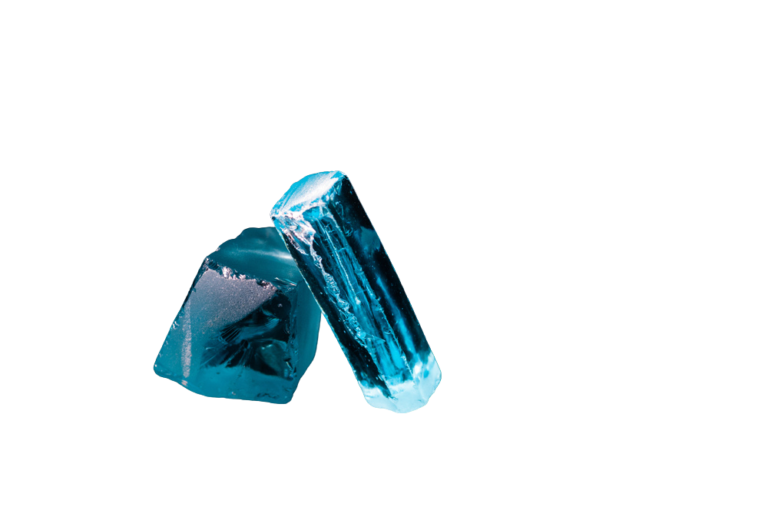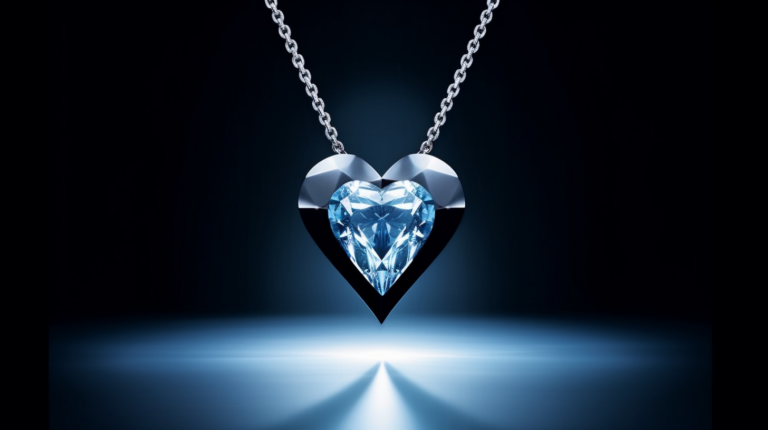Azurite Stone: Properties, Benefits & Meanings

Azurite Stone Overview
Azurite Stone is a beautiful blue mineral that can be found all over the world. It can be used as an ornamental stone, pigment, and even jewelry.
This article will provide all the information you need to know about Azurite Stone, including its meaning, uses, and properties.
What is Azurite Stone?
Azurite Stone is a soft, deep-blue copper mineral that forms from weathering of copper ore deposits. Azurite’s chemical formula is Cu3(CO3)2(OH)2—it contains both carbonate and hydroxide ions in its structure.
Azurite stone is best known for its characteristic blue color (also called “azure“), which resembles the blue evening skies often seen above deserts and winter landscapes.
People have used Azurite stones for thousands of years in many parts of the world. The ancient people used it as an ore of copper, a pigment, and a stone they would use for decoration. They still use it for all those purposes today.
Where does the name Azurite come from?
Since antiquity, the Azurite stone’s deep, clear blue color has been associated with low-humidity desert and winter skies. The modern name of the mineral reflects this association: Azurite is derived via Arabic from the Persian word lazhward (لاژورد), an area known for its deposits of another deep-blue stone, lapis lazuli (“stone of azure”).In 1824 François Sulpice Beudant, was the first to use the name Azurite.
What are some other names for the Azurite stone?
Azurite, which occurs at the type locality of Chessy-Les-Mines near Lyon, France, was known as Cheseylite during the early 19th century.
Pliny the Elder wrote about Azurite in his Natural History under its Greek name Kuanos (κυανός: “deep blue,” root of English cyan) and Latin Caeruleum.
Some other names for Azurite include:
- Armenite (of Delamétherie)
- Azure Copper Ore
- Azurite (of Beudant)
- Blue Carbonate of Copper
- Blue Malachite
- Chessy copper
- Chessylite
- Lasur
- Lasurite (of Haidinger)
- Blue Spar (in part)
How to say Azurite?
Azurite is pronounced as A-zoo-rit. It’s the same way you would say “azure” or “azure sky.”
What is the history behind the Azurite stone?
The Azurite stone was used in ancient Egypt as a pigment, and Mesopotamian writers report the use of special mortars and pestles for grinding it. Although it does not appear to have been used in ancient Roman wall paintings, Roman writers were undoubtedly aware of its use as a pigment. The fusing of glass and Azurite was developed in Mesopotamia.
The use of Azurite stone and malachite as copper ore indicators led to the naming of Nickel in English.
Where does the Azurite Stone Occur?
Azurite and malachite are found in the same areas, though Azurite is less abundant than its sister mineral. Both minerals occur widely as supergene copper ores, formed when copper-bearing rocks weather where they are associated with cuprite, native copper, and various iron oxide minerals.
Azurite stone Storage and Decay
Azurite is more unstable in the open air than malachite and often undergoes a transformation to malachite under the right conditions. During this weathering process, some of the carbon dioxide (CO2) in Azurite is replaced by water.
Azurite is relatively stable under ordinary storage conditions, so specimens retain their violet color for long periods.
Where can Azurite stone be found?
Some of the major deposits of the Azurite stone can be found at the following locations:

A more comprehensive list of all the locations where Azurite can be found is given at Mindat.
Physical Properties of the Azurite stone
| Mineral Group | Copper Carbonate Minerals |
| Formula | Cu3(CO3)2(OH)2 |
| Color | Dark Blue, Azure Blue |
| Hardness (Mohs scale) | 3.5 – 4 |
| Crystal System | Monoclinic |
| Fracture | Conchoidal |
| Luster | Vitreous |
| Specific Gravity | 3.77 |
| Transparency | Transparent, Translucent |

Azurite stone Cost and Value
Azurite is quite costly due to its rarity. The exact cost, however, depends on the following factors:
- Size: Price increases drastically with an increase in size as larger stones are harder to find and more difficult to cut.
- Quality: Quality is determined by the number of inclusions and imperfections in the gemstone. Clarity is also essential when determining the quality of an Azurite stone.
- Color: The color of the Azurite stone influences its value as well. The most valuable Azurite stones are those that are blue in color.
- Transparency: Transparency is essential when determining value as it allows you to see the stone’s internal beauty. The clearer an Azurite stone is, the better its price.
- Cut: The cut of a gemstone also affects its price. As with all fine jewelry, the quality of the amount determines how beautiful and valuable it will be. The cut can make a massive difference in the price of specific stones.

What is the typical appearance of Azurite stone?
Azurite stone is distinguished by its blue color and several other distinctive optical properties. The color and intensity of minerals such as Azurite are characteristic of copper(II). Many coordination complexes of Copper(II) exhibit similar colors.
The carbonate mineral azurite reacts with dilute hydrochloric acid to form a light blue liquid. As a result, Azurite also produces a streak of light blue on unglazed porcelain.
Azurite stone usually forms a tabular or prismatic crystal of blue color with lustrous, glassy faces. Tabular crystals tend to have wedge-shaped terminations. Azurite forms rosette-like aggregates or occurs in massive, stalactitic, and botryoidal formations as well—its color can range from dark azure blue (well-developed) to pale (less so).
How to tell if an Azurite stone is real or not?
Confusion has arisen between Azurite and lapis lazuli, another historical source material of blue pigments. Sodalite—another gem material commonly cabbed and carved—is sometimes confused with Azurite as well.
Although these materials may show similar colors, azurites have a higher refractive index (RI), specific gravity (SG), and lower hardness than lapis or sodalite. Azurites are also birefringent; lapis and sodalite are not.
Generally, the following methods are used to check if the Azurite is genuine or not:
- Color: Check the color for vibrancy and monotony. If it’s monotonous and lacks depth, it is likely fake. Look for natural color changes, which are most common in the center of the stone.
- Acetone Test: Do an acetone test. Soak in acetone for a few minutes to see if the color comes off. If it does, then it’s likely fake.
- Transparency: Check transparency. Opaque stones are usually fake.
- Check for inclusions: Inclusions are natural flaws in the rock. If you look closely at your gemstone, you should be able to find them. They will be small and irregularly shaped. If there are none, then it is probably fake.
A refractometer can also be used to determine whether the Azurite is natural. This tool uses light and a lens to measure the gemstone’s birefringence, which is its ability to bend light through different indexes of refraction. If you hold up a piece of Azurite stone against this device, it should show two different colors when you view it from different angles.

Azurite stone Chakra Connection
Which Chakra does Azurite stone Symbolize?
Azurite is a stone of the Throat Chakra, also known as the voice of intuition. It can help you speak what needs to be said and let go of any fear that might hold you back. This can be useful when communicating an idea or opinion without censoring yourself.
Azurite is also associated with the Third Eye chakra. This Chakra is located between your eyebrows and is often called your body’s psychic center. It is associated with intuition, wisdom, and imagination.
Where are these chakras located?
- The fifth Chakra, Vishuddha Chakra, is located at the base of the throat, at the center of the larynx.
- The Third Eye Chakra, also called Ajna, is found in the center of your head, parallel to the middle of your eyebrows.
What does Azurite stone Symbolize?
Azurite stones symbolize the following:
- The Sky and Sea: Azurite is a blue stone that symbolizes the sky and sea. It suggests inspiration, peace, and tranquility.
- Purity of Heart: Azurite stone is a crystal of purity, especially in its blue form. It can help you stay true to yourself and your beliefs. This can be useful when you are trying to make difficult decisions and need clarity of thought.
- Loyalty and fidelity to friends: Azurite is a stone of commitment and dedication. It can help you stay true to yourself and your beliefs, which can be helpful when making difficult decisions. This is also a good stone for friendships, as it encourages loyalty and fidelity from those around you.
- Calming and Soothing: Azurite is a stone of tranquility. It can help to soothe emotions, ease stress and provide calm in situations where you are feeling anxious or panicked. This can be useful if you want to relax after a long day at work or dealing with a stressful situation.
- Spiritual Grounding: The Azurite stone can help with spiritual grounding. This stone enables you to stay connected to your higher self and the universe, so it can be helpful in meditation and other spiritual practices.
- Creativity: Azurite can help to enhance creativity. This is a stone that can be used in artistic endeavors and also for problem-solving.
- Emotional support: It is believed to aid in times of grief or trauma, helping soothe emotions and providing calm in situations where you are feeling anxious or panicked.
Azurite stone Uses
Azurite stones have the following uses:
- Azurite has been used as a pigment for thousands of years. It resulted in different shades of blue depending on its fineness and elemental composition (copper carbonate). When mixed with oil paint, it turns slightly green. When combined with egg yolk, the mineral azurite forms a green-grey color. Older samples of this pigment may show a more greenish tint due to weathering into malachite—a similar but different compound.
- It has been used as beads and jewelry, but its softness tempers the stone’s appeal. It also loses its blue color with exposure to air. Azurite is easily destroyed by heat, so all mounting of azurite specimens must be done at room temperature. This is why it is often combined with malachite to form Azurite Malachite crystals.
- The strong color of Azurite stones makes them famous collector stones. However, the belief that specimens must be carefully protected from bright light, heat, and open air to maintain their intensity may be an urban legend.
- Azurite crystals are sacred stones that may have healing properties. People often use them to soothe migraines, balance vertigo and treat joint problems.
- Although Azurite stone is not a primary ore of copper, the presence of Azurite on rock surfaces indicates that weathered copper sulfide ores are nearby. It is often associated with the chemically similar malachite, producing a striking color combination of deep blue and bright green that can tip off prospectors to copper carbonate deposits.
- It is a stone of communication, clarity of thought, and expression. Azurite can help you see things from another perspective, especially when you are stuck or frustrated with something in your life.
- Azurite is also a stone of mental acuity and can help you focus on the task. It can be used to calm anxiety, which makes it helpful for people with ADHD or who have trouble focusing.
- Native Americans used it in ancient times as a stone of heaven. They utilized its metaphysical properties to access psychic powers, open up their inner vision, and treat it as a sacred stone.

How to clean Azurite stone Jewelry?
The usual household cleaning method includes the following steps:
- Soak in lukewarm soapy water for 15 – 30 minutes until the dirt and stains loosen up.
- Please remove any remaining residues with a soft toothbrush until it appears spotless.
- Use a gentle dishwasher detergent or baby shampoo solution in case the stains do not come off. You can also use baking soda as an alternative to dishwasher detergent.
- Wipe the crystal with a microfiber cloth until it is smooth and lustrous.
- Cleanse it using burning sage to remove any negativity absorbed, which can negatively impact the surroundings.
- Recharge it using the moon’s light or burying it underground, whichever method suits you.
Be sure to cleanse the Azurite before you use it. It will help you stay energized and keep negative energies at bay.
Azurite should be protected from household chemicals and extreme heat exposure, which may cause damage or alterations in coloration. Most ultrasonic cleaners and steamers are safe to use, but it’s recommended that you do so with caution. Azurite jewelry is stored in a fabric-lined container separate from other jewelry pieces.
FAQ
How hard is Azurite stone?
Azurite stone has a Mohs hardness rating of around 4. This means it is considered a soft stone. It is essential to take care when handling this stone to ensure you don’t leave marks and scratches by accident.
What other gemstones can be paired with Azurite stone?
Azurite is a beautiful blue stone that can be paired with many different crystals. Since they all share similar properties, you can pair this stone with Topaz, Amethyst, Moonstone, and Tanzanite. These powers are enhanced when the gemstones are close to one another.
How can Azurite stone be charged?
Azurite can be energized by sunlight or moonlight or be charged effectively near a salt lamp and Feng Shui water fountain.
Is Azurite stone associated with any health risks?
Azurite stone dust is toxic and should not be inhaled when cutting and polishing.







